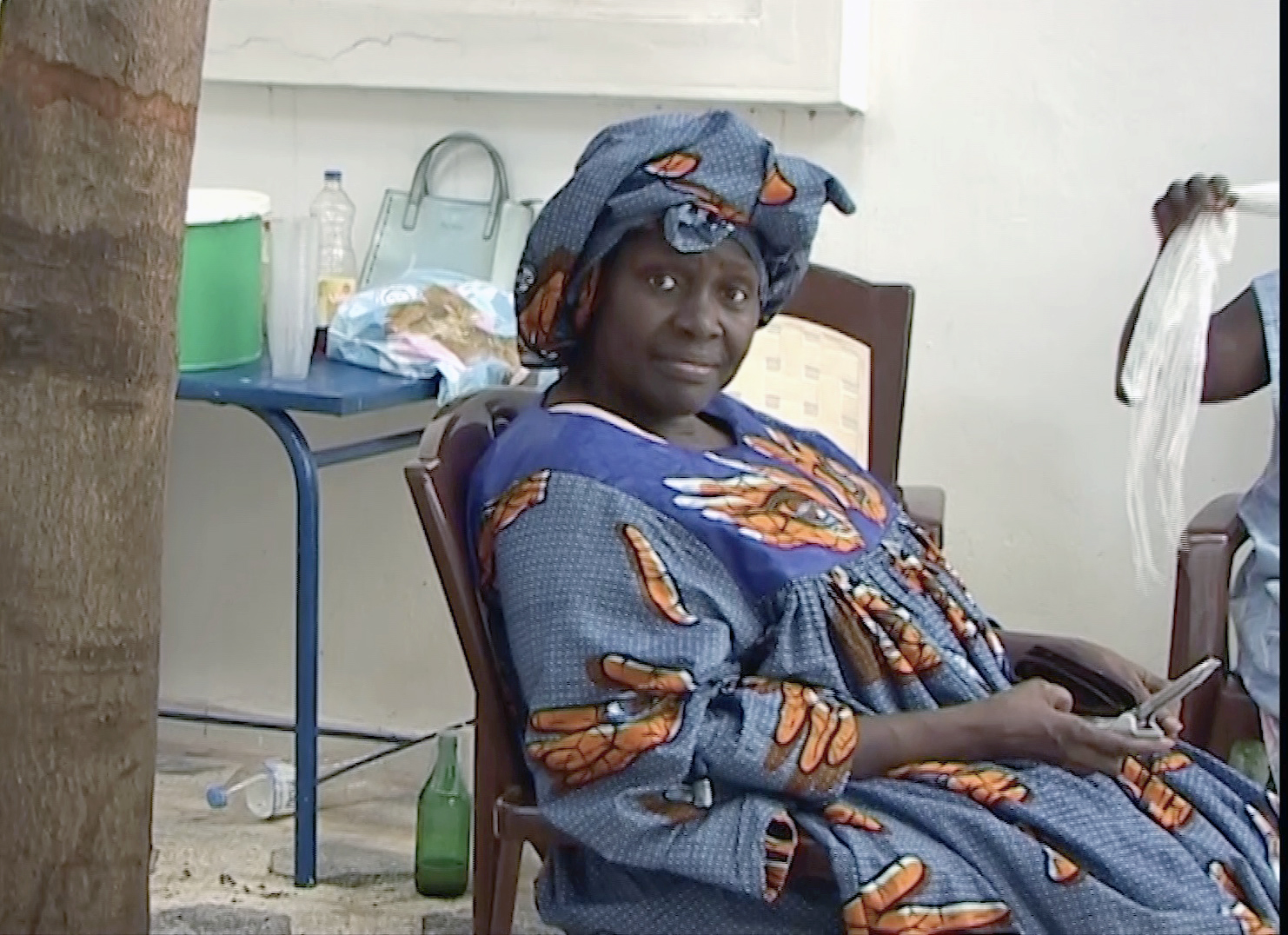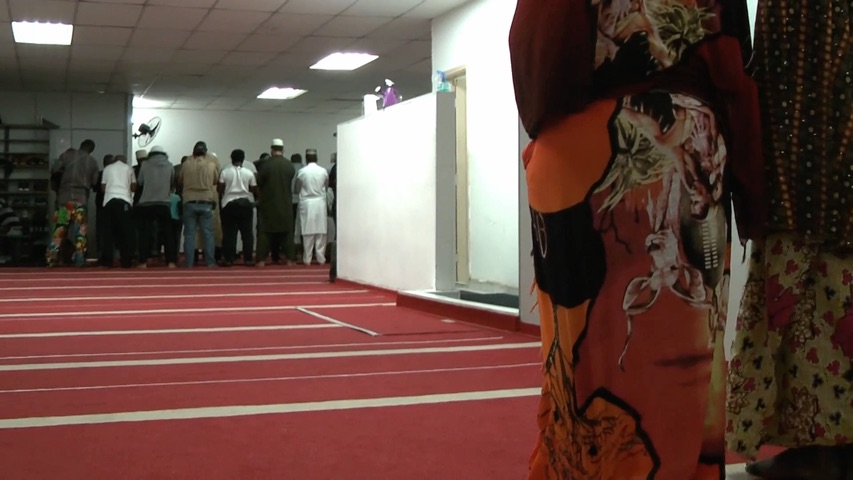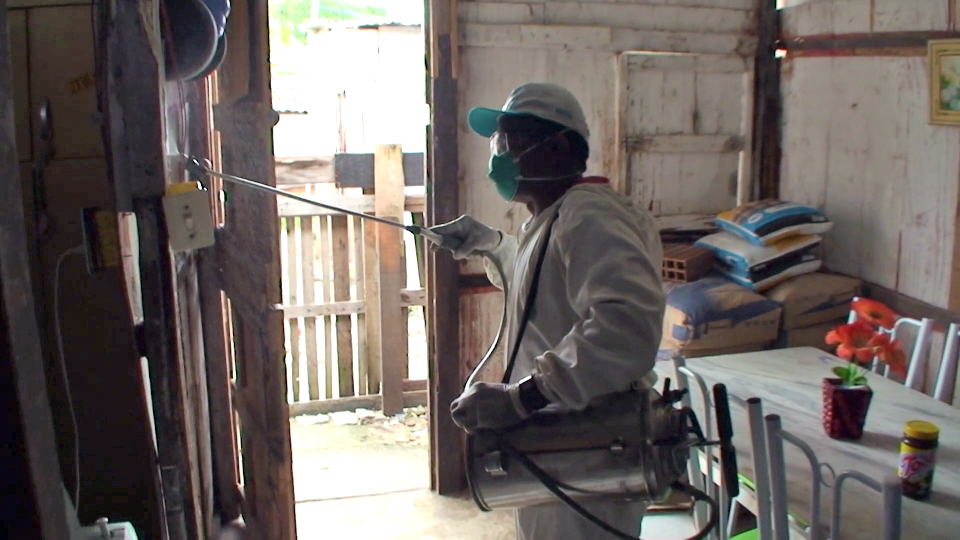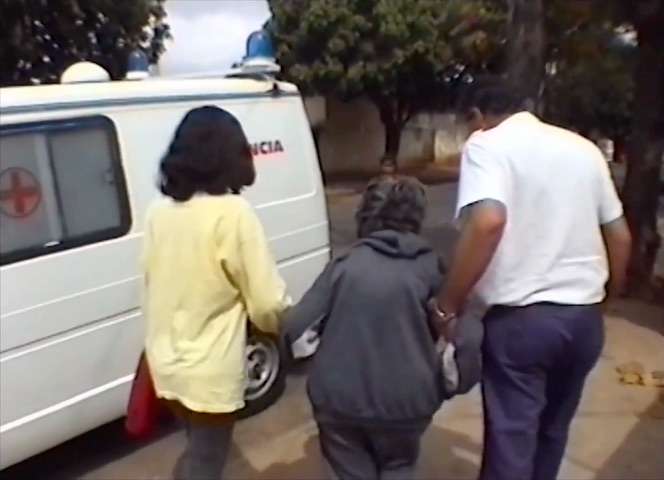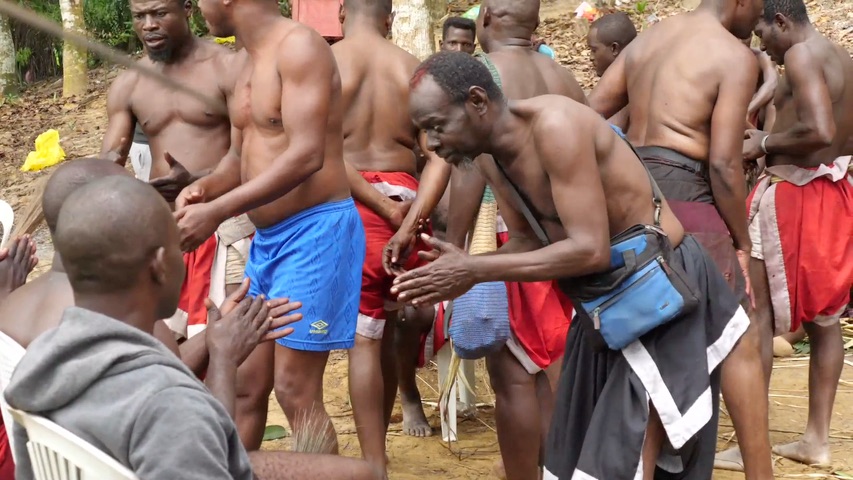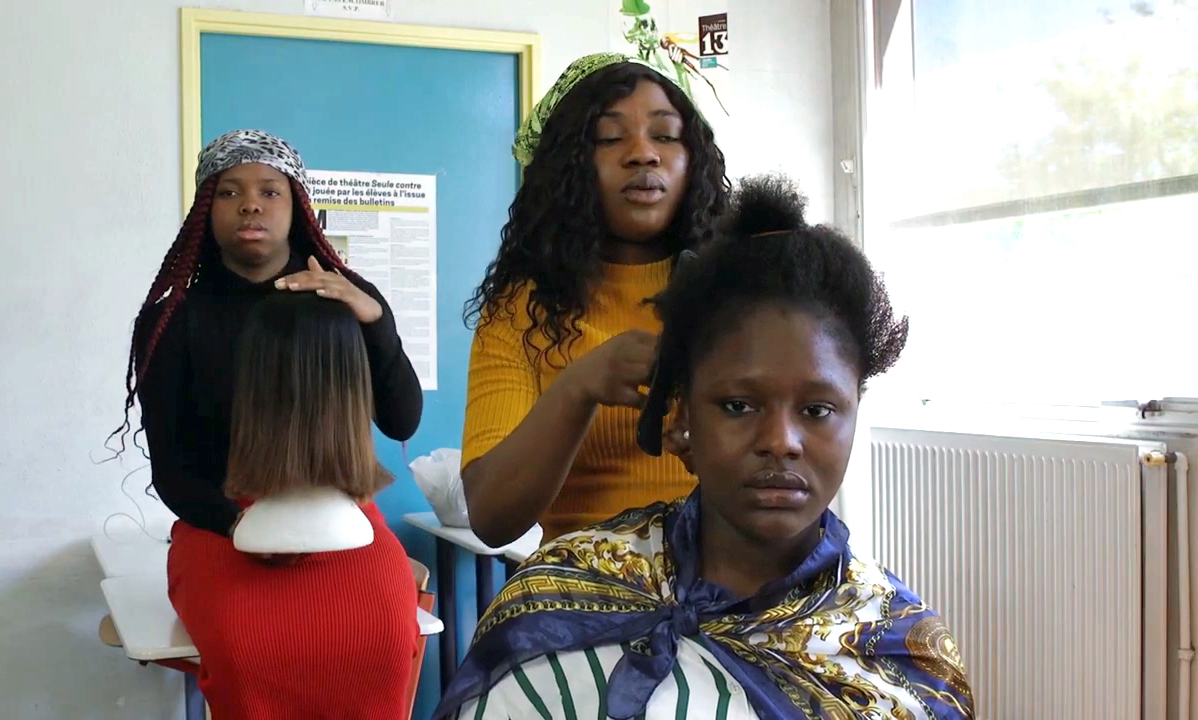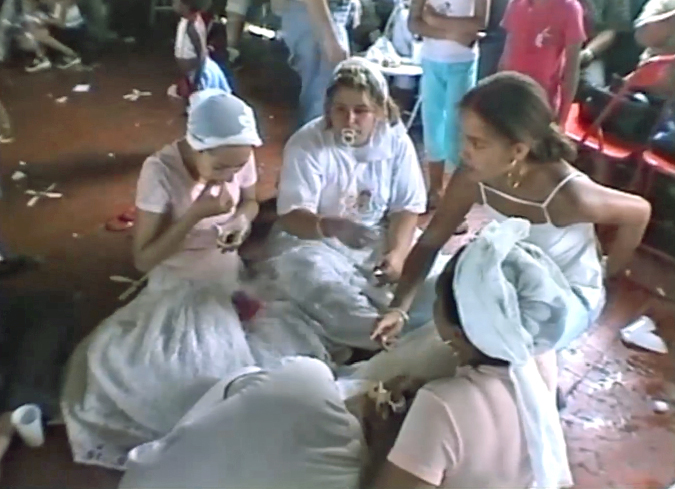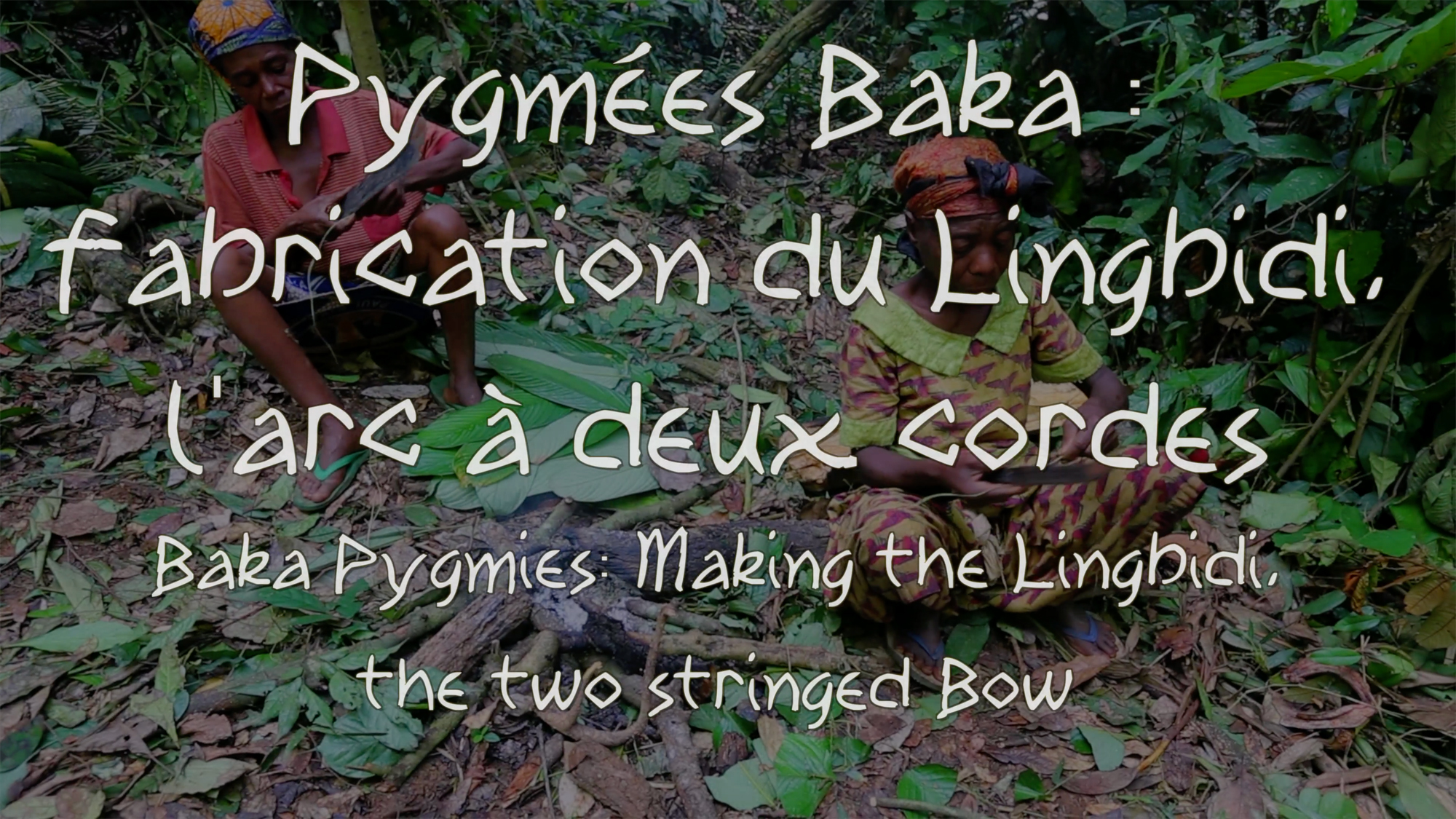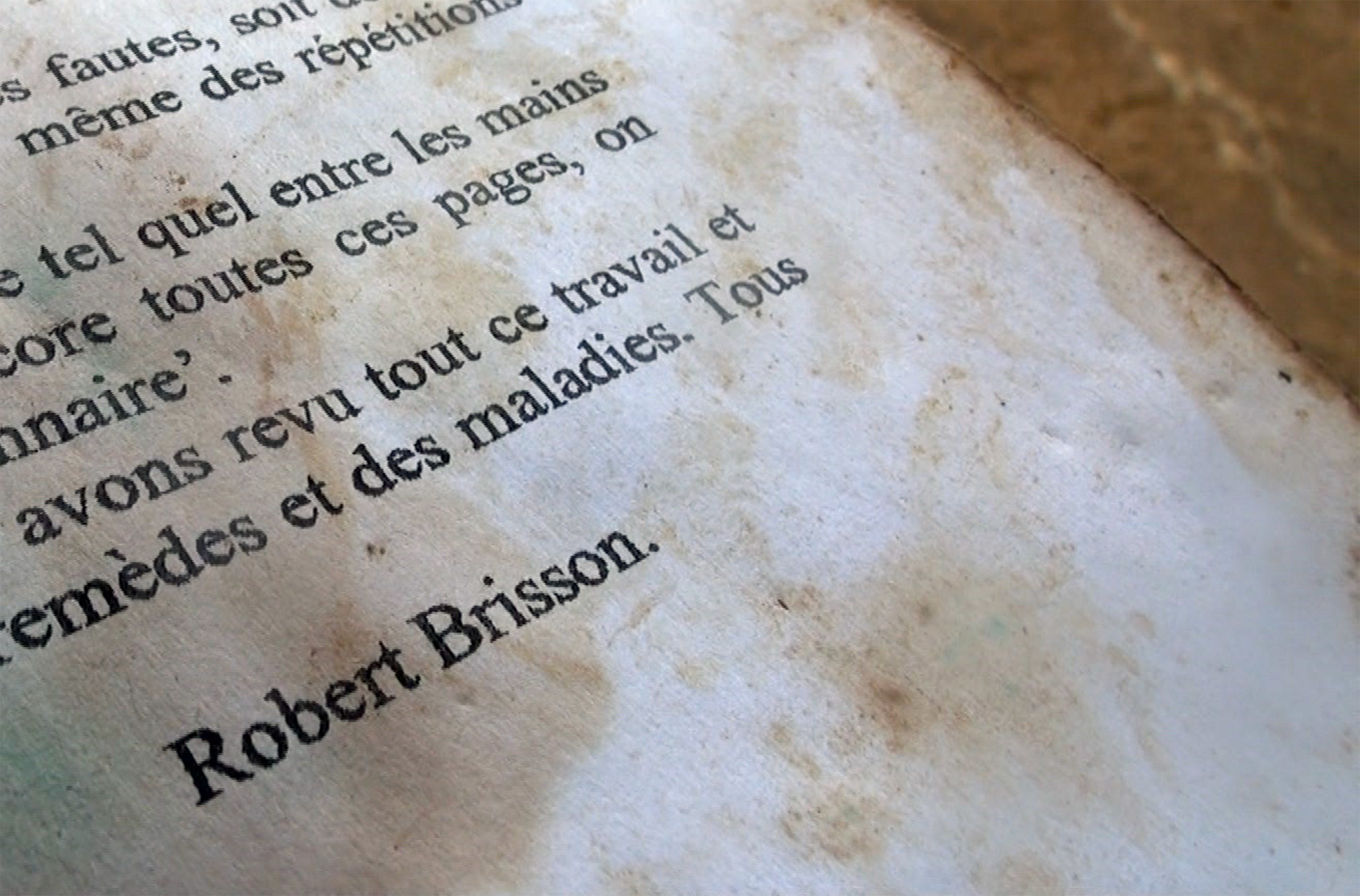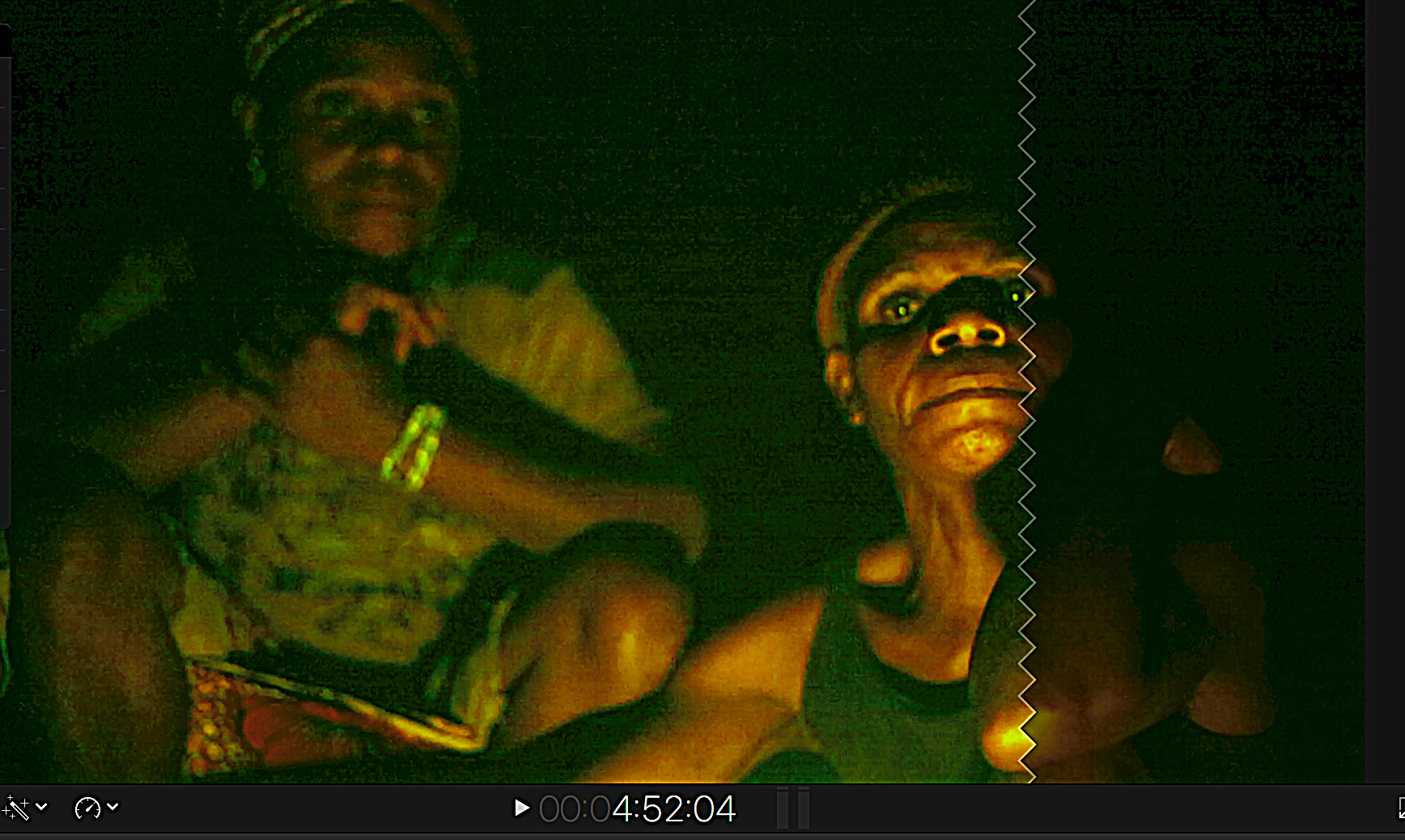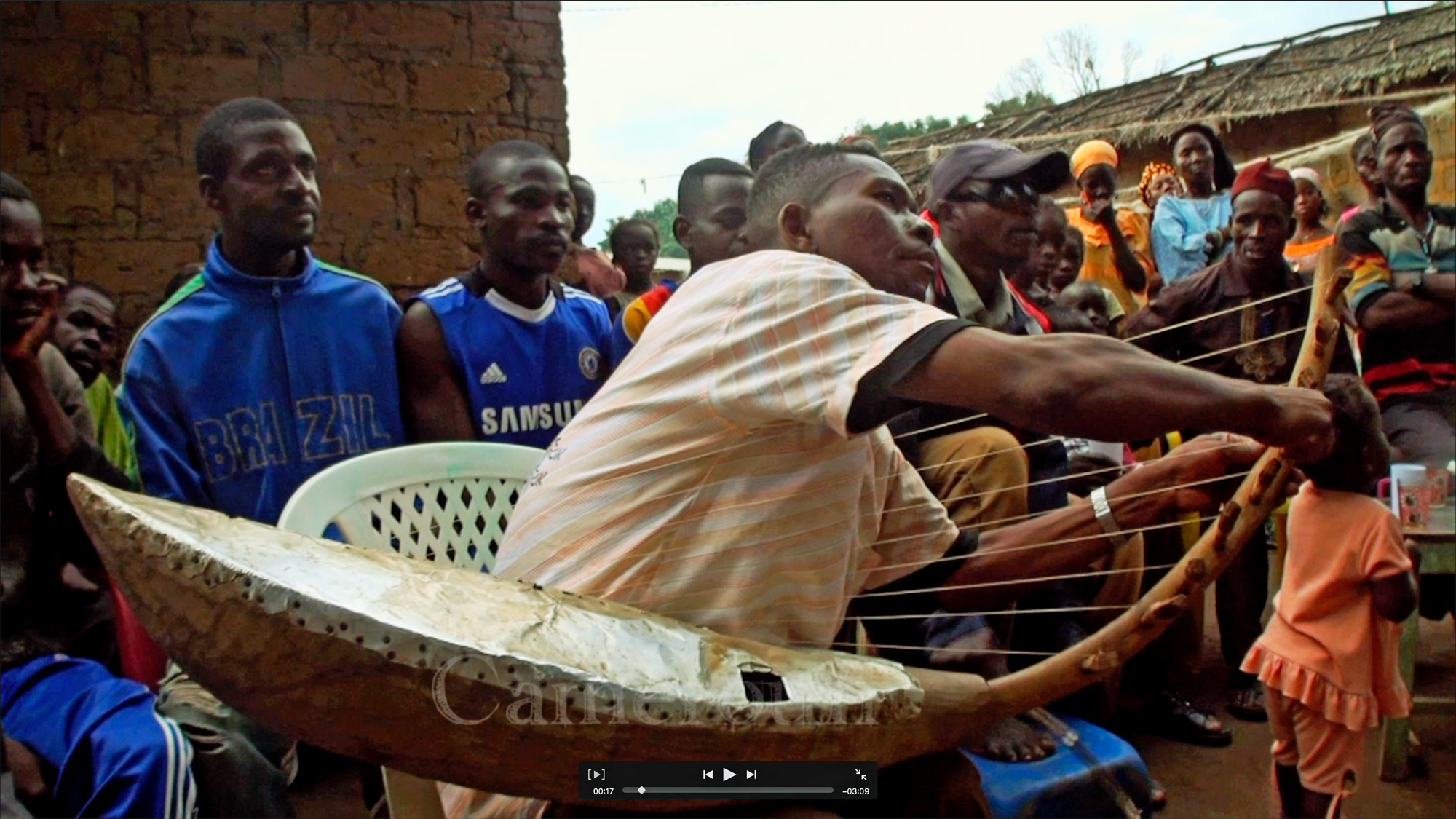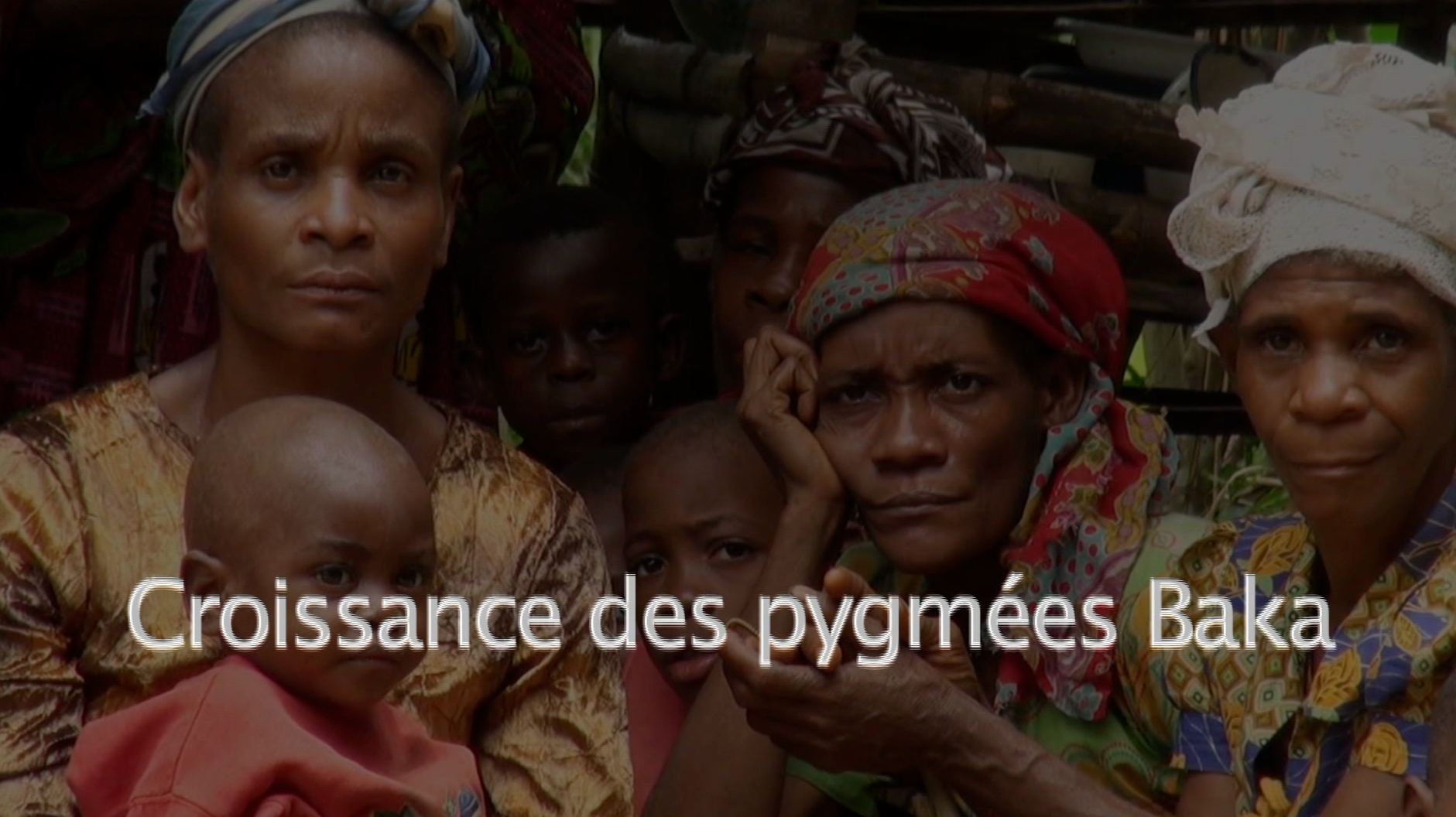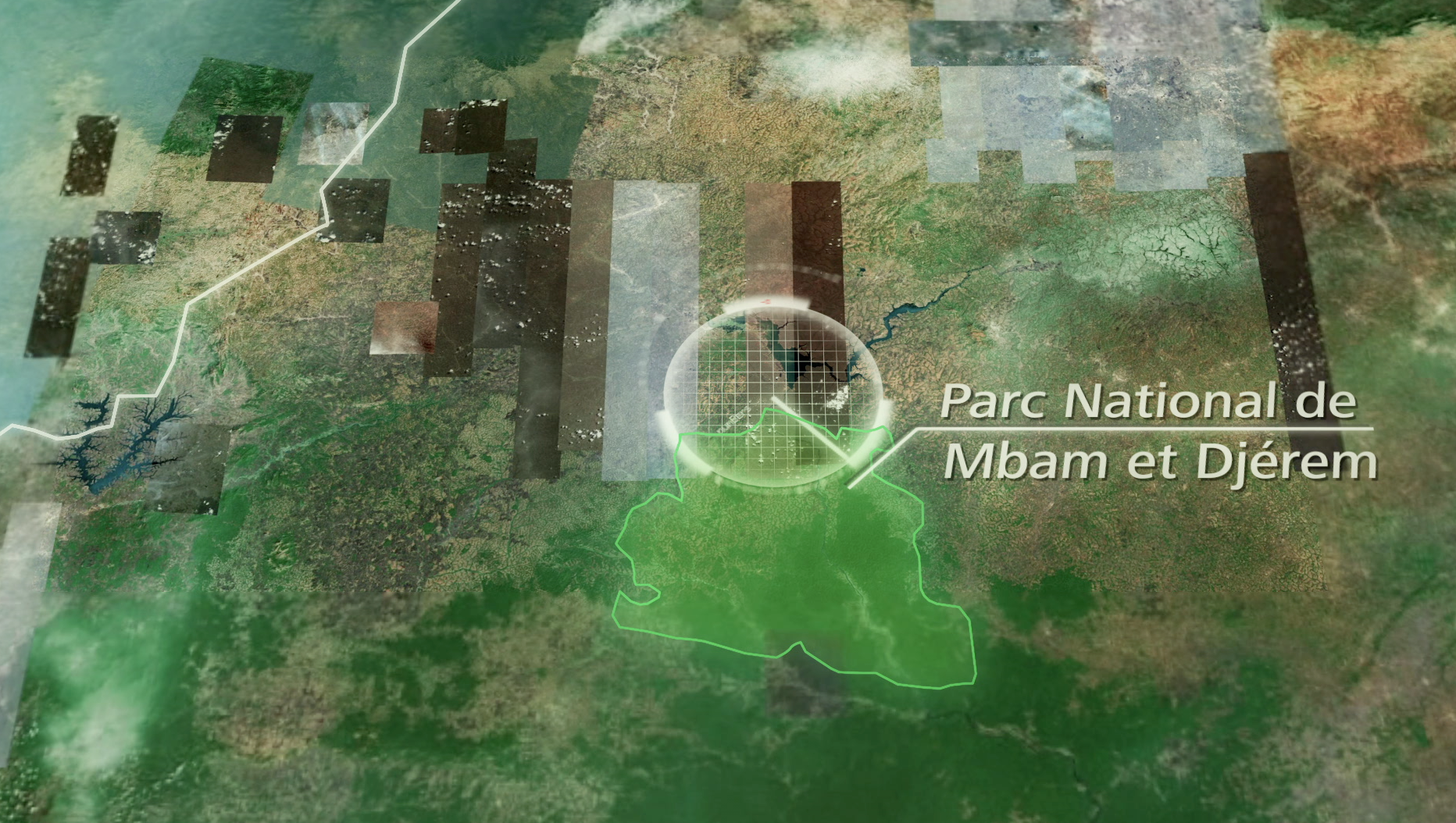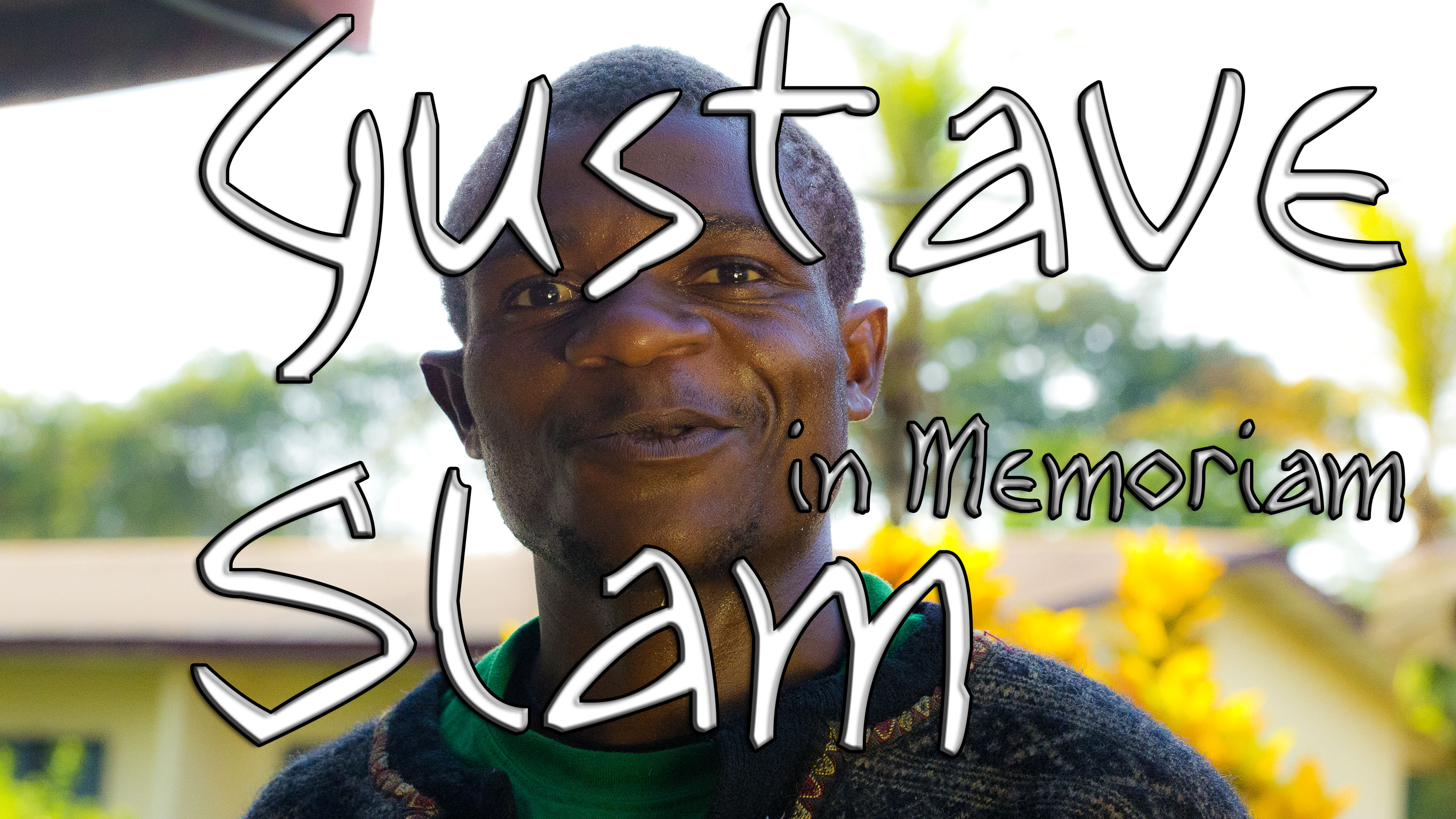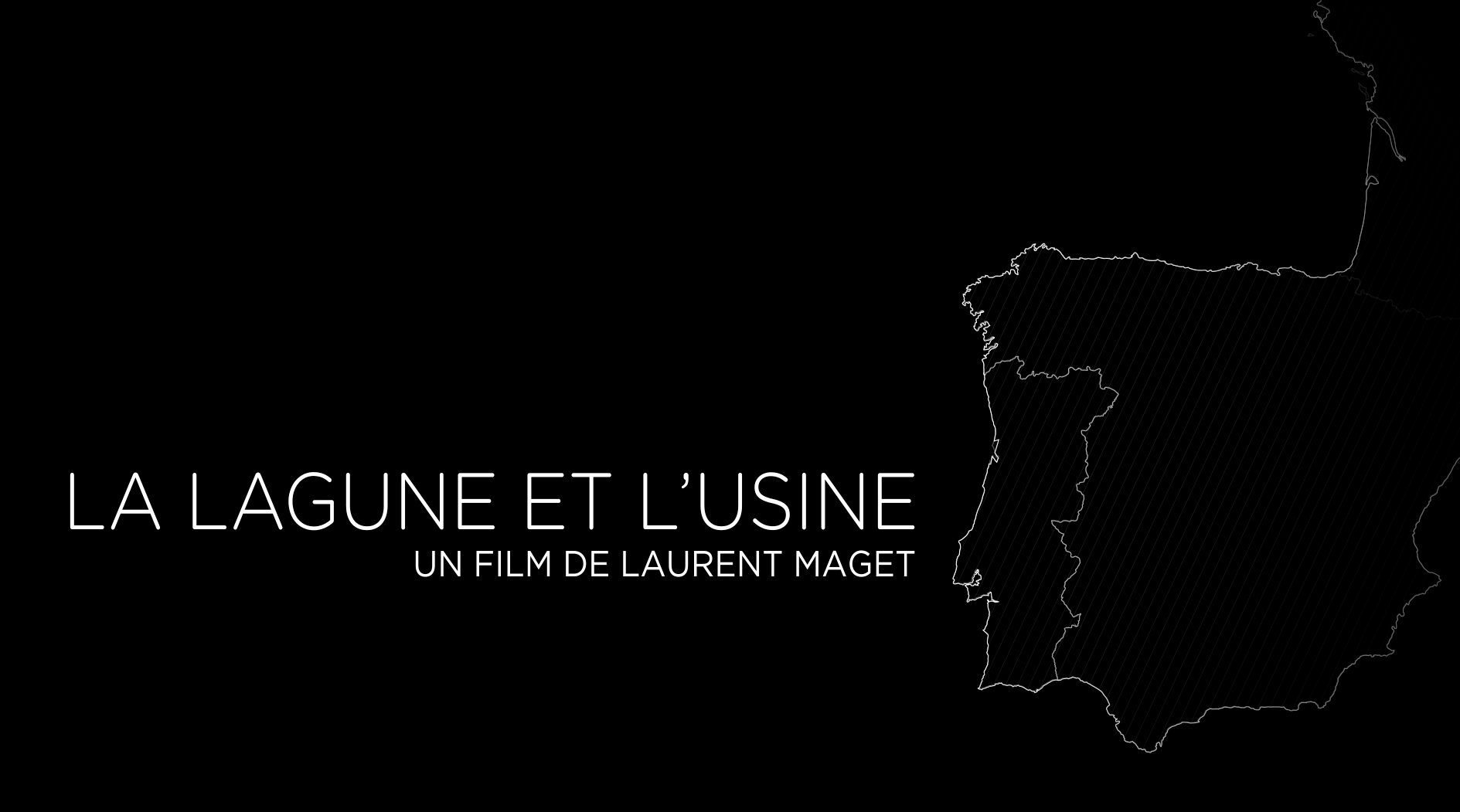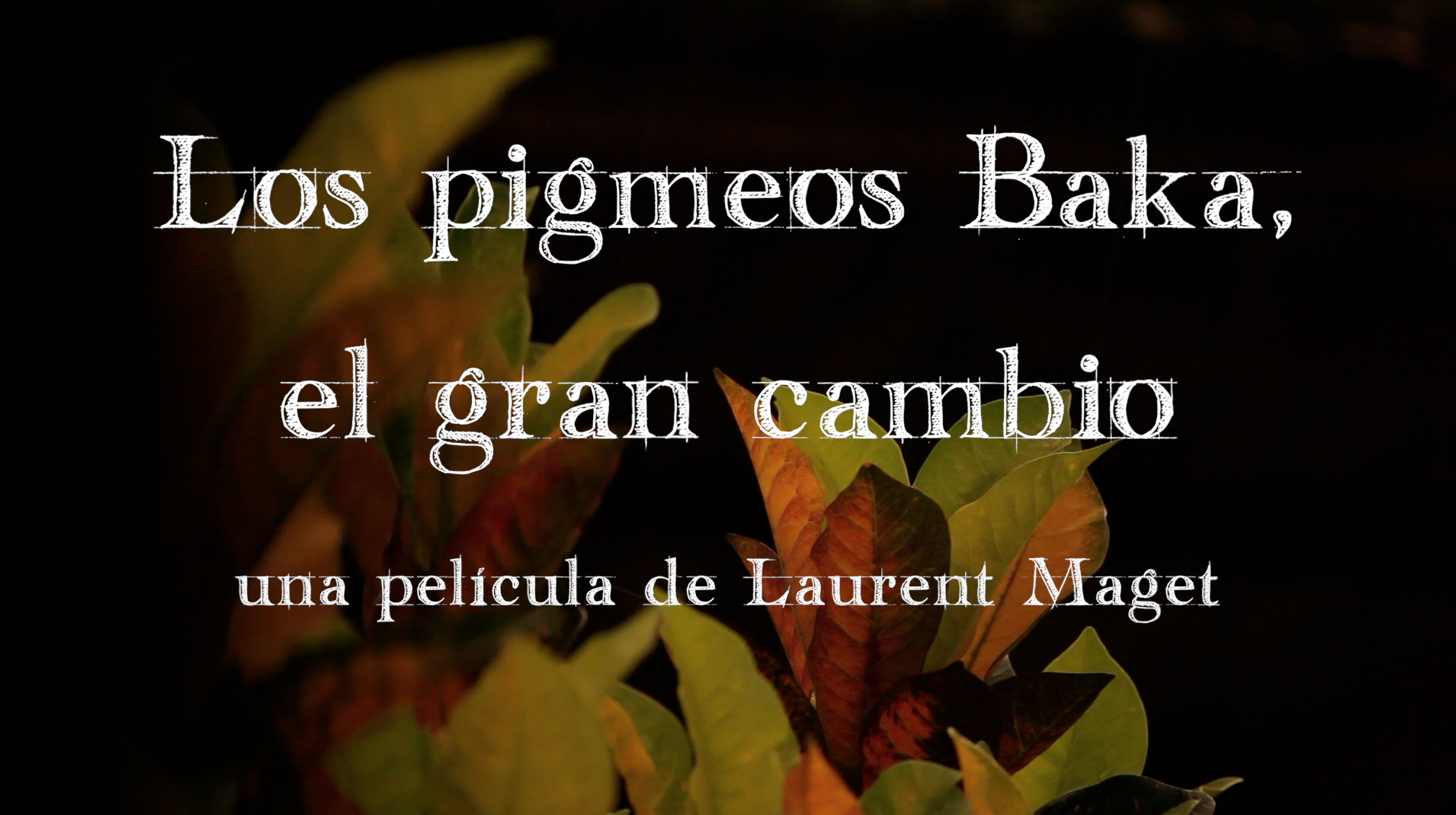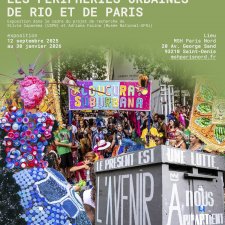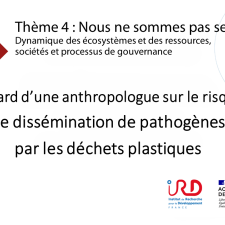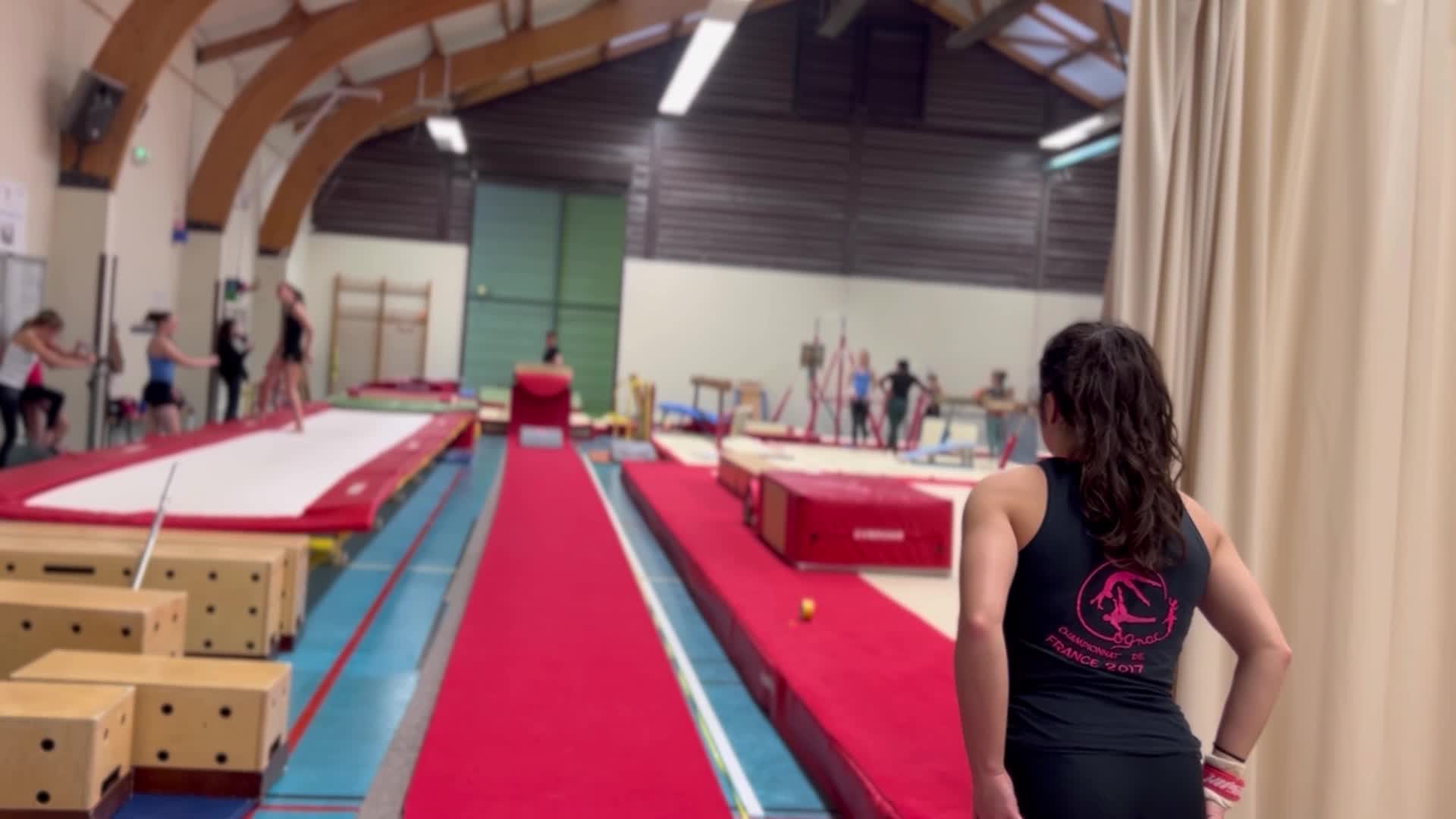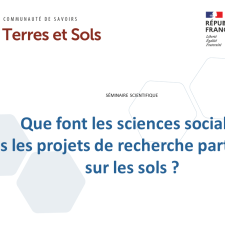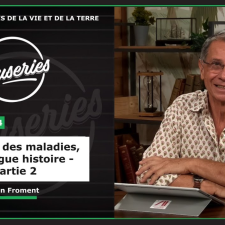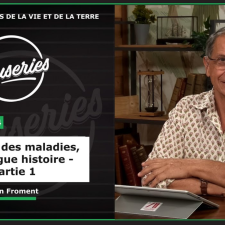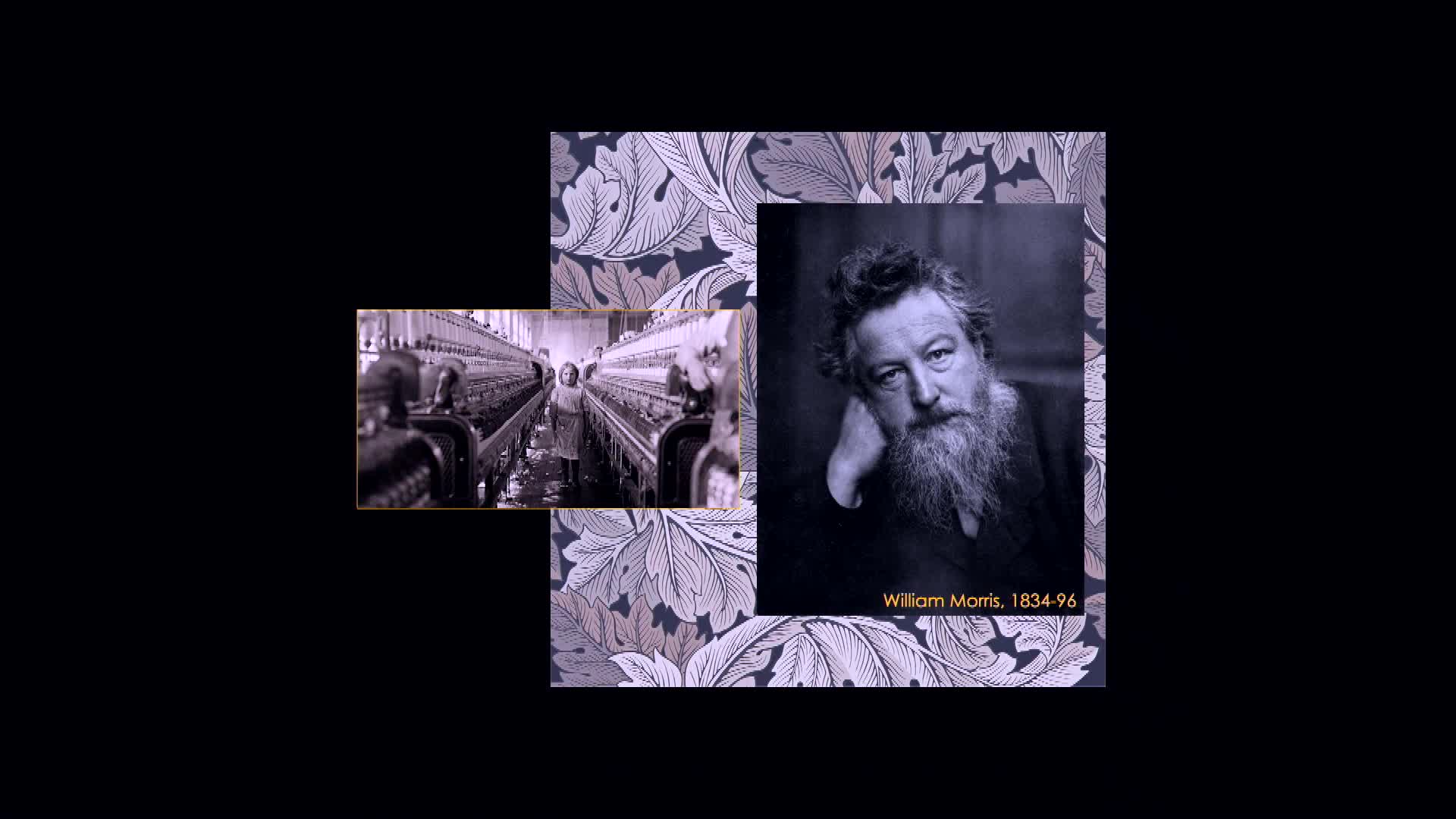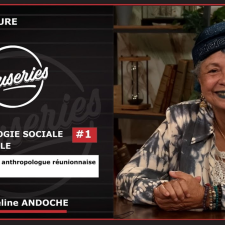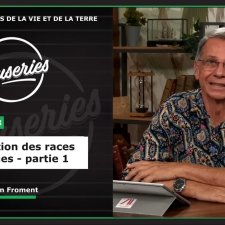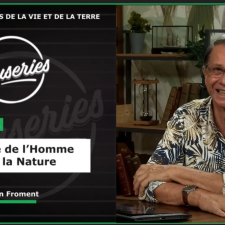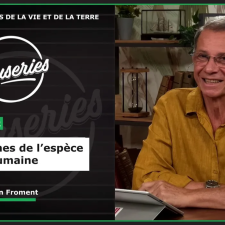Notice
Baka Pygmies, the Turning point
- document 1 document 2 document 3
- niveau 1 niveau 2 niveau 3
Descriptif
Baka Pygmies, the Turning-point
a film by Laurent Maget
Transcription
Pierre Kalo
Storyteller / Guide
I was born here in the forest. I lived in a camp with my parents, not far from the track. We hunted, gathered food ... and sometimes exchanged food with the Bantus.
When we went to get food in the village, we arrived at Messok and the Bantus said there's a nun here who needs the Baka people and it might be good for you, as you went to the school in Abong Mbang a little. It might be a good thing to go and see her.
So off I go to see the sister. And when I get there she asks
- Who are you?
- I'm a young Baka.
So while we're talking she says
- But Kalo, wouldn't it be good to group the Baka here, because they're a bit threatened by the Bantus.
- Ah, I said 'Yes I agree. We can try. It might work!''
We came for a walk and saw a whole wood there, where nobody lived. We went to all the camps to ask the Baka if they wanted to come with us and live here.
So we arrived in 1972, here, at Le Bosquet.
Here's the gold mine that I found at Le Bosquet
Fernando Ramirez Rozzi – Anthropologist, Biologist – CNRS Director of Research
These are the records of births at the Bosquet from the 1980s to today.
It is a true mine of information because for the first time we have the precise dates of birth of about 800 Baka children born here at Le Bosquet from 1987 to 2012. This means that for the first time in history we can meet a Baka child or adolescent and know his precise age.
Work was done before these notebooks. It was done by Father Ignace Dhellemmes who made cards showing the relation between the various Baka groups. He noted the parents and children on each family card ... and then showed the families in relation to each other. In fact this was real demographic work, a considerable job.
So the work of Father Dhellemmes and that of the other missionaries of the time like Father Robert Brisson is fundamental and enables us to be here today. As the aim of our work is to know the growth of the Baka groups, we need precise ages.
Alain Froment – Doctor of Medicine, Anthropologist - IRD Director of Research
We prospected for years in Cameroon for our surveys and I discovered the existence of the notebooks when I came to the Bosquet. I understood immediately that it was something extraordinary to be able to use figures for the growth of the children, and especially 'Pygmy' children because these did not exist before. Here, thanks to continuous work for years, we were able to answer the question
We are a team of anthropologists. This is a fairly general term that covers human diversity. There's cultural diversity and we have ethnologists and ethnomusicologists in the team—only people who study the cultures of the peoples of the world—and then we have biologists. So we are biologist-anthropologists. We examine the evolution of the human species. And that is why a field like this one that is somewhat at the margin of humanity, that is to say a forest environment setting constraints and peoples with fairly special physical characteristics, and a configuration as can be seen here, enables us to illustrate questions of human diversity and adaptation to the environment.
Data gathering in anthropology is often a bit tedious—especially anthropometric measurements, what we call biometry. We need this for our studies of growth, whether for both adults and children and we take 10 to 20 measurements that form a treasure of figures that is complicated to use.
Fernando Ramirez Rozzi
It is agreed that growth is similar in all modern populations of humans. It must be remembered that growth is a change in dimensions until the adult size is attained. If the size differs between populations, this means that the processes responsible for this size are also different.
This difference in size and difference in growth reveal very rich and substantial human biological diversity.
In the case of the Pygmies, we assume that small size is an adaptation to their environment, to the forest. But what interests us is how adult size becomes established.
Six years of data gathering means that we can now sketch a growth curve for the Baka. And its immediate usefulness—seen very clearly this year—is proof that all the data that we are collecting are applicable.
Alain Froment
CoCoCo !! Hello! How are you? Hello little one! Come and see me ...
Well that is a pathological case partially explained by chronic parasitism—especially a large liver, a large spleen and also parasitism consisting of both malaria and intestinal worms, and certainly an uptake problem.
What she eats is not converted into growth.
Fernando Ramirez Rozzi
I can't see anything there... I'm going over there...
Yes, here we are. Poor Jeannette, it's in red... We measured her in 2007, 2008 and 2009 and you can see that from 2008 to 2009 she lagged and broke with the normal growth curve for Baka women ... and in 2012, here, she is well below the figures for her age. So we see that her height is roughly equivalent to that of children between four and five and a half, and not at all the height of a child of nine and a half. That is to say she has a considerable delay in growth and her mother told us that she had been ill right after her birth and couldn't breastfeed her.
Alain Froment
So tell the mother, and this is important, that it is not a question of money so she mustn't hesitate to go to the dispensary. We'll look after that—it's part of our job anyway to do a little correcting when we see pathological cases. It is clear here that we are beyond research. This a medical aspect and that child must be monitored regularly.
Fernando Ramirez Rozzi
When I came to Le Bosquet for the first time I went towards the meeting hut and introduced myself. I explained the aim of my research here and so I would come often—at least once a year—and I then offered to bring a dentist from time to time who would treat the Baka free of charge. This is why I brought a dentist here for the first time two years ago and here I am for the second time with a dentist at Le Bosquet to thank them for their help.
Alain Froment
In fact the team consists of researchers from a number of different institutes: IRD, CNRS, the Natural History Museum… each with his own origin, culture and training and we have worked on building a concept—human ecology.
This interests ethnologists as it is above all the cultural response that serves in mediation with the environment, for immediate adaptation. In the longer term there is a genetic adaptation and so human ecology combines these two bio-cultural approaches to make an entity.
Fernando Ramirez Rozzi
Mboto
Kalo
Mboto
Fernando Ramirez Rozzi
"Dongue, tondo" ... I collected the others last year: "peke, koko, cana, bokoko" —I already have all these.
Kalo
Yes, that's it. It's good for making sauce. Yes, you cut it up like that in small bits, like coconut. You put it with fish. It's very good, like spinach.
Kwekoalso comes from umbrella trees—it's food for monkeys. But when you're short of food, you can eat it. Because monkeys eat what man eats.
Alain Froment
Le Bosquet has become a research platform and insofar as our team is multidisciplinary, our students from the Museum have an area for research that we can allow them to use, and this will enable them to explore different directions—Agnès Sjöstrand, Doctoral student in Biological Anthropology at the Museum of Natural History— either in the medical field, in epidemiology, or in the cultural and musicological field, in language and also in the exploration of tastes as here there are hunter-gatherer peoples who have a long specific diet history that is not that of farmers, and one of the hypotheses to examine is whether taste—the perception of foodstuffs—differs in the evolutionary history of diet.
Alain Froment
The pygmies traditionally lived in the forest. They were mobile, semi-nomadic and relatively far from the tracks while farmers had chosen to develop their villages along the tracks. Then because of the attraction of the tracks, the pygmies finally arrived along the road too and their numbers increased. So their habitat finally became structured and developed. Moangue-Le Bosquet, which interests us because of the large population, is also interesting as regards cultural evolution. We're in a town! There's a school, a hospital, shops... So tomorrow's way of life is already starting here.
Djény Adjoh Fieh – Owner of a bar at Le Bosquet
We're in Djény's bar.
This is where they dance and entertain. It's lit from 6 o'clock and people dance until midnight! This is my shop here. There's Castel and juice, cigarettes, there are Maggi cubes, soap, 'chichi' sweets for little girls, powdered chocolate, oil, eggs, King Arthur cake mix ... When I arrived there was only one shopkeeper, called Moussa. There was nobody. And when I arrived I was the second person. So I changed very quickly because when I came to Le Bosquet people made fun of me, saying 'You're going to live with the pygmies? You live with the Baka? How are you going to manage there? Those people smell! How are you going to manage with them?' I said no I'm going to earn a living. Money doesn't smell! That's what I said, like that! So they mocked me at the beginning. But as they saw how I had changed after two years they said 'Oh! So Baka money has become clean and you have changed! We're going to set up in Le Bosquet too!' A lot of people have come now. There are already five shopkeepers here.
When a Baka man has perhaps five hundred francs, if he wants to buy rice, instead of buying three hundred francs' worth he'll buy a hundred francs worth and might buy alcohol and a packet of King Arthur for four hundred francs. That's the way it goes. He likes wine more than food. But they have no ambition nonetheless. When a man has money he'll spend it immediately and not think about tomorrow.
Kalo
I can't do anything in front of the children. I can't even do anything with my son because they encourage him to drink Nofia, which is bad, which kills and which burns the inside of your body. It's a great pity! It's destroying him!
Fernando Ramirez Rozzi
Things are changing very fast. Unfortunately the changes are not always for the better. For example, alcohol is arriving strongly and this is a new phenomenon in the last three years.
Alain Froment
Alcoholism is not a vice as such but a symptom. It is a symptom of the unhappiness of a population that is seeing things going too fast around it and alcohol is therefore a refuge and an escape. This situation is observed in many oppressed minorities and it is a transition.
Geneviève Lomié – Shopkeeper in Lomié
Something is not right among the pygmies. Why don't they change? Analyse your pygmies thoroughly to see why they don't become like us. Take a blood sample and send it to the big laboratories and see what they are. See if they really are normal men or if they have different blood, like an animal perhaps or something else.
Bertrand Magbwa Silas– Electrical mechanic – Building industry trainer
The pygmies are considered as people to be rejected. The Bantus must understand that the Bakas still have a position in society.
Kalo
We now truly need a system to make it understood that the Baka world should really be respected.
Alain Froment
It must be understood that the situation is not permanent. The cultures themselves change but we are at a moment when traditional society is experiencing the shock of change. And when , around this, there are development projects that started with timber, bringing workers, bars, prostitution etc... There is an enormous project today ...
Kalo
It's very big! It covers the whole forest from Kongo to Messok, to Messea ... Geovic is going to work everywhere around Lomié, even beyond the river Dja!
Alain Froment
So from the ecological point of view it's a project that will have negative effects on the fauna and on forests in general but which from the social point of view is also an opportunity as it brings money, jobs, development, the opening up of the area and in a country like Cameroon the issue is finally that of finding new resources. While preserving natural capital as much as possible. And this is the situation that will develop in the next few years.
Bertrand Magbwa Silas
During the prospection phase, Geovic used nearly 250 persons and a direct change in biodiversity, ecosystems and hunting was felt ... Well!
Kalo
Everything is falling apart. When we are here in this small settlement called Mbala, if I want to go for a walk I can't see anything because there's nothing. There are so many people here at Le Bosquet! You have to go further to find something... This modern life destroys everything.
Bertrand Magbwa Silas
Geovic had a summary plan that it showed to the people. They said that there would be at least 2500 direct jobs and nearly 2000 indirect ones. And there are Australians, South Africans, Cameroonians, Congolese, Central Africans…
Oke Minzo family
Yes, there's a letter box.
Laurent Maget
and… what's it for?
Oke Minzo family
It's for suggestions from the communities concerning the development that Geovic is to bring us. OK, we suggest a lot of things but there are no results. There's information more than a year old ... This has no significance! Recently, the coordinator told us that they were trying to get 400 thousand million francs from funders like China.
Bertrand Magbwa Silas
There's something wrong in this funding business. Why? Because I remember that when MacDonald International took the chairmanship of the company they said:
'Geovic does not have a problem of money, but the worst problem is the management'. Somehow, when Geovic say that they don't have money, that they are looking for funding, we think that it means that they are contradicting themselves ...It's still a real mystery.
Alain Froment
As long as the nomadic way of life prevailed, it was finally difficult to identify pygmies as regards civil status in particular. They had no identity cards, they didn't really feel like citizens, but when the settling process began the problem arose and so they became visible. They became citizens and started to pay tax, to be educated and what we are now waiting for is doctors, lawyers and architects from the pygmy community, as from any community in Cameroon.
Jean-Marie Kama Nkeube – Headmaster in Saint Kisito
We had 88 pupils at the beginning of the school year and, unfortunately, finished the year with 38. You see, a little more than half left. It seems that the children are less and less interested in school and that's why they leave every day.
I was scandalised myself at the beginning of the year when I came here. A mass of traders arrived and I would say that they attracted the Baka children in the wrong direction. You see, Baka children like music. And when there is music during the day when we have classes, it's serious I assure you! It is difficult for the teacher to teach because all the children are attracted by what they hear.
You see, it's a school ... And if nothing is done to make it attractive, frankly it is going to disappear. So my plan is first of all to make it attractive so that children become interested and feel comfortable at school.
Laurent Yenjo – Singer and composer of the group Tibola
'Know how to read, count and write and also have knowledge and work well to defend your rights. Training and developing his skills, capacity and talents means that a child will have the chance of having a job that suits him. That is what education is.'
Laurent Maget
Well? What does this song say?
Pierre Dangassa – Author / Composer / Singer
So it means 'Oh my brothers, first we have suffered, we have had much unhappiness and suffering. Our brothers the Nzimés have mistreated us. We have run but have got nowhere. We always run and run and run ...'
Alain Froment
Pygmies in general and the Baka here are not at all threatened with disappearance. Quite the opposite. There is remarkable demographic vigour. We see little children everywhere and the dispensary has reduced a death rate that was very high for a long time. Father Dhellemmes' notebooks show that 30 years ago life expectancy was 24 years, that is to say half of the life expectancy to Cameroonian citizens at the time. So this improvement in medicine also results in an improvement in demography. So the population is larger in fact.
But the traditional way of life is going to disappear and this is typical of any culture. None are fixed. The issue is simply that of adapting and taking the right turning-point.
Author / Director: Laurent Maget
Laboratoire Dynamique de l’évolution humaine – CNRS – 2012
Prix de l'Exploration au Festival du Film d'Aventure et d'Exploration de Toulon 2013
Intervention / Responsable scientifique
Dans la même collection
-
En mémoire et en honneur à Dina Correa Mendy
RebufaOlivierHommage à la napëne Dina Corréa Mendy, guérisseuse traditionnelle manjak qui a exercé plus de quarante ans. Elle nous a quitté le 8 février 2018. Entre Dakar au Sénégal et la région de Canchungo en
-
Un sabato di ramadan alla Moschea nera di San Paolo (Brasile)
JacquemotArmelleFondata nel 1974 da un gruppo di giovani afro-brasiliani ispirati ai Black Muslims, la Moschea nera di San Paolo ospita la più grande comunità di musulmani africani della Grande San Paolo - originari,
-
Pragas : assainissement à Recife, Etat du Pernambuco, Brésil
JacquemotArmelleÀ Recife, dans le Nordeste du Brésil, le manque d'eau courante et d'assainissement profite aux rats, cafards, scorpions et moustiques tigre qui sévissent dans toute la ville. Avec ses collègues du
-
Pragas : pest extermination in Recife, State of Pernambouco, Brazil.
JacquemotArmelleIn Recife (Brazil), the non-existence of sanitation and the lack of tap water make it easy for rats, scorpions and tiger mosquitos to spread, and they run rampant throughout the whole city. With his
-
Urgences (Marília, Etat de São Paulo, Brésil)
JacquemotArmelleUrgences présente la réalité du travail quotidien accompli par les chauffeurs-secouristes et les opérateurs de la Centrale d’ambulances de la ville de Marília (Etat de São Paulo/ Brésil),
-
Un samedi de Ramadan à la Mosquée noire de Sao Paulo (Brésil)
JacquemotArmelleFondée en 1974 par un groupe de jeunes afro-brésiliens inspirés des Black Muslims, la Mosquée noire de São Paulo abrite la plus grande communauté de Musulmans africains de la Grande São Paulo
-
Dynamisation manuelle d’une solution d’Arnica 6 CH à partir d’une solution d’Arnica 5 CH(Pharmacie …
JacquemotArmelleA l’image de ce qui se passe dans d’autres pharmacies dites « de manipulation », nombreuses au Brésil, Patricia réalise ici pour la pharmacie homéopathique d’État de São Paulo, la préparation manuelle
-
-
Les filles d’Eugénie
Trois rencontres avec un génie
-
Cérémonies et rituels de l’umbanda : la fête des enfants Marília, État de São Paulo Brésil, les 13 …
JacquemotArmelleTerreiro du Vieux-noir Pai Fabiano, Marília, État de São Paulo (Brésil), les 13 et 14 octobre 2001
-
Guérir des visions nocturnes : pratique de soin par un devin-guérisseur aka du village d'Enyelle, …
DudaRomainArmand, 14 ans, souffre de visions nocturnes depuis plusieurs années. Ses rêves sont régulièrement visités par des Mami Wata, sirènes ou génies des eaux symboles de sexualité et de féminité. Ces
-
Baguenaude au Musée de l'Homme : du sens du mal à la gestion de crise par Michel Ogrizek
EpelboinAlainOgrizekMichelMédecin de brousse, migrant à travers le continent africain pendant près d'une décennie des années 1975 à 1982, du Sahara aux savanes sahéliennes, de la forêt primaire aux mangroves des bords de mer,
Avec les mêmes intervenants et intervenantes
-
Chronique des Pygmées baka : Fabrication du Lingbidi, l'arc à deux cordes. Baka Pygmies : Making …
MagetLaurentPygmées Baka : Fabrication du Lingbidi, arc à deux cordes : Tournage au campement d'Awolowolo " 3° 6'31.94"N 13°53'4.37"E "Exclusivement féminin tant dans sa fabrication que dans son utilisation
-
Chronique des Pygmées baka : Robert Brisson, linguiste, ethnologue, missionnaire
MagetLaurent"Je me suis servi de ce que j'avais encore de bon. Mes oreilles et ma petite intelligence pour décortiquer la grammaire de cette belle langue musicale. C'est une merveille et j'en suis passionné.
-
Chroniques Pygmées Baka : Conte du chimpanzé et de la fille de Komba
MagetLaurentLe chimpanzé partait donc chercher une fille, c’était la fille de Komba, elle était très belle.
-
Cordophone et chant au village de Mbakaou, nord Cameroun
MagetLaurentCordophone…Harpe, luth, cithare ou lyre … le jeune garçon a terminé la fabrication de son instrument la veille. Il est venu nous chercher pour l’enregistrer. Nous sommes au bord du lac de Mbakaou, au
-
El crecimiento en los pigmeos Baka
MagetLaurentNuestra investigación sobre el crecimiento en los pigmeos Baka de Camerún comprende numerosas disciplinas del nuevo campo que representa la antropología biológica: la genética, la epigenética, la
-
Croissance des pygmées Baka / Mission 2010
MagetLaurentFernando Victor Ramirez Rozzi_Directeur de Recherche Laboratoire Dynamique de l'évolution humaine UPR 2147-CNRS Alain Froment_Directeur de Recherche Laboratoire Patrimoines locaux et gouvernance -
-
Parc national du Mbam et Djerem - Mbakaou - Cameroun
MagetLaurentSite du parc national du Mbam et Djérem : Créé en janvier 2000 au centre du Cameroun, il s'étend dans l'Adamaoua, dans une zone comprenant à la fois la forêt pluviale équatoriale (au sud et à l
-
Chronique des Pygmées baka : Gustave Slam
MagetLaurentDepuis 2010, l'alcool manufacturé en sachets de 5 cl arrive par palettes entières dans les villages de bord de piste, jusque dans les campements de débardage en forêt. Gustave, jeune Baka chanteur et
-
Chronique des Pygmées baka : Musiciens / Groupe Tibola 2012
MagetLaurentCette année 2012 est un tournant pour Tibola, le groupe de musiciens baka de Moangue le Bosquet. Ils élargissent leur répertoire, composent des paroles en français, réunissent des jeunes danseuses et
-
La lagune et l'usine
MagetLaurentLe long de l’océan s’étire la plus grande lagune du Portugal : la ria d’Aveiro, réservoir fragile d’une biodiversité exceptionnelle. Tout près, le Complexe Chimique d’Estarreja s’est développé depuis
-
A ria e a fábrica
MagetLaurentÀ beira do oceano estende-se a maior ria de Portugal : a ria de Aveiro, frágil reserva de uma biodiversidade excepcional. Bem próximo, o Complexo Químico de Estarreja desenvolveu-se durante sessenta
-
Los pigmeos Baka, el gran cambion
MagetLaurentLos pigmeos Baka, el gran cambion / una película de Laurent Maget 1 Autor / Director: Laurent Maget Transcripción: Fernando Victor Ramírez Rozzi -------------------------
Sur le même thème
-
Journée d’étude I Les lucioles : art, culture et espoir dans les périphéries urbaines de Rio et de …
Capanema P. De AlmeidaSílviaFacinaAdrianaBirmanPatríciaMerklenDenisCarneiroSandra de SáDans nos paysages urbains généralisés, nous cherchons les lucioles. En leur absence, les collectifs culturels sont capables de rallumer les étoiles, comme dans les vers d’Apollinaire. Autrement dit,
-
Regard d’une anthropologue sur le risque de dissémination de pathogènes par les déchets plastiques
FacheÉlodieÉlodie FACHE présente le projet VECTOPLASTIC sur le risque de transmission de bactéries pathogènes des microplastiques marins vers les animaux qui les ingèrent , puis vers les humains qui consomment
-
Les techniques du corps en gymnastique artistique
Portrait d'une jeune gymnaste en apprentissage depuis ses 4 ans. On le retrouve dans le gymnase de la Vallée Violette à Joué-les-Tours.
-
Que font les sciences sociales dans les projets de recherche participative sur les sols ? - Cosavez…
Que font les sciences sociales dans les projets de recherche participative sur les sols ?
-
L'Homme #4 - L'origine des maladies, une longue histoire - Partie 2
FromentAlainBrunet-MalbrancqJoëlleL'Homme #4 - L'origine des maladies, une longue histoire - Partie 2
-
L'Homme #4 - L'origine des maladies, une longue histoire - Partie 1
FromentAlainBrunet-MalbrancqJoëlleL'Homme #4 - L'origine des maladies, une longue histoire - Partie 1
-
À la poursuite du plaisir : désirs et défis des artisans contemporains
MarchandTrevor Hugh JamesProfesseur d’anthropologie sociale (SOAS, Université de Londres) et collaborateur scientifique de la MSH, Trevor Marchand explore le thème de la poursuite du plaisir au travail chez les artisans
-
Anthropologie Sociale et Culturelle #1 - L'itinéraire d'une anthropologue réunionnaise
Brunet-MalbrancqJoëlleAnthropologie Sociale et Culturelle #1 - L'itinéraire d'une anthropologue réunionnaise
-
La question des "races" humaines - Partie 1
Brunet-MalbrancqJoëlleFromentAlainCauseries Sciences de la Vie et de la Terre - L'Homme #3 - La question des races humaines - Partie 1
-
La question des "races" humaines - Partie 2
FromentAlainBrunet-MalbrancqJoëlleCauseries Sciences de la Vie et de la Terre - L'Homme #3 - La question des races humaines - Partie 2
-
L'Homme #1 - La place de l'Homme dans la Nature
Brunet-MalbrancqJoëlleFromentAlainCauseries des Sciences de la Vie et de la Terre - L'Homme #1 - La place de l'Homme dans la Nature
-
L'Homme #2 - Aux origines de l'espèce humaine
Brunet-MalbrancqJoëlleFromentAlainLes Causeries Sciences de la Vie et de la Terre - L'Homme #2 - Aux origines de l'espèce humaine



